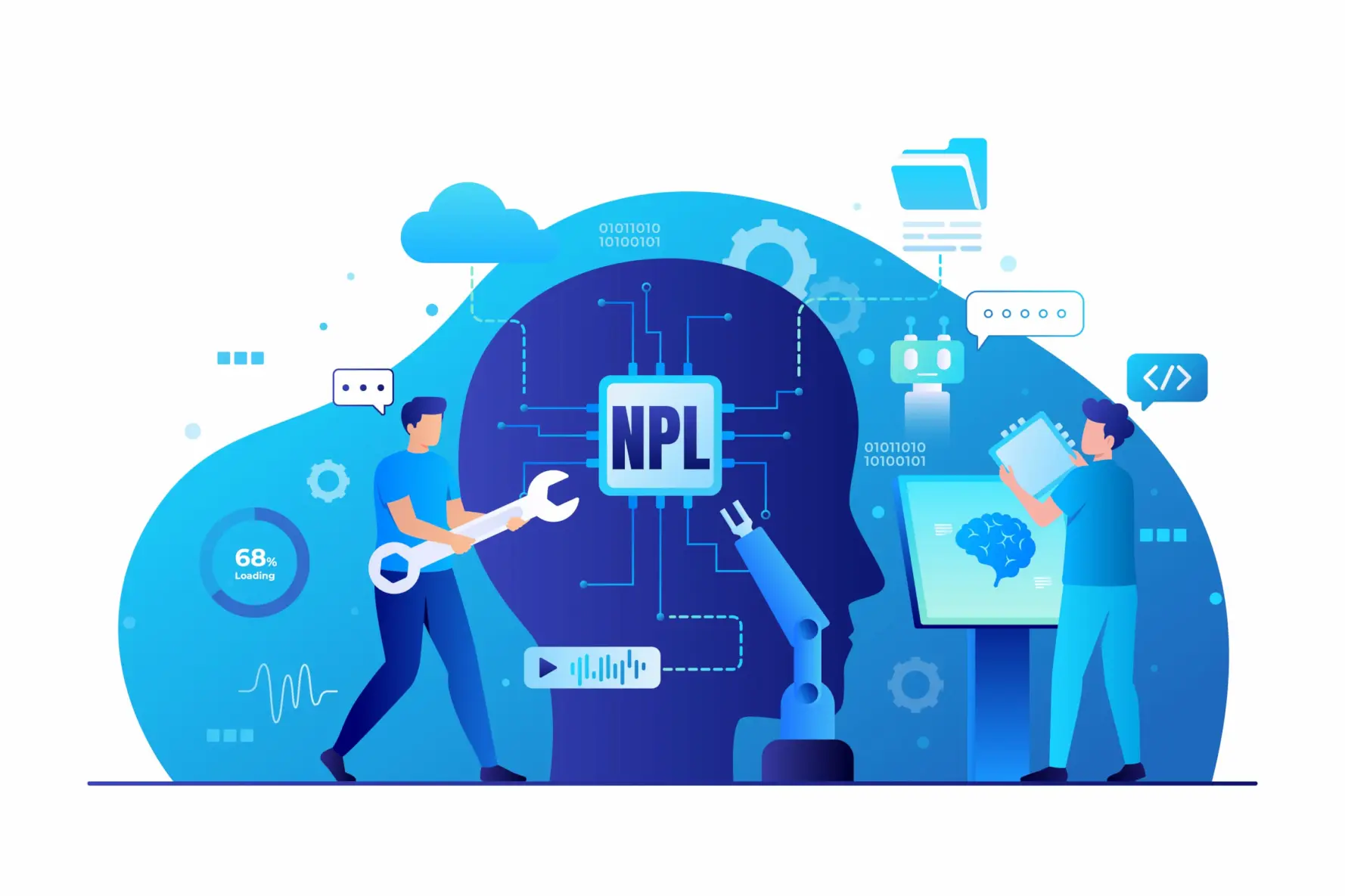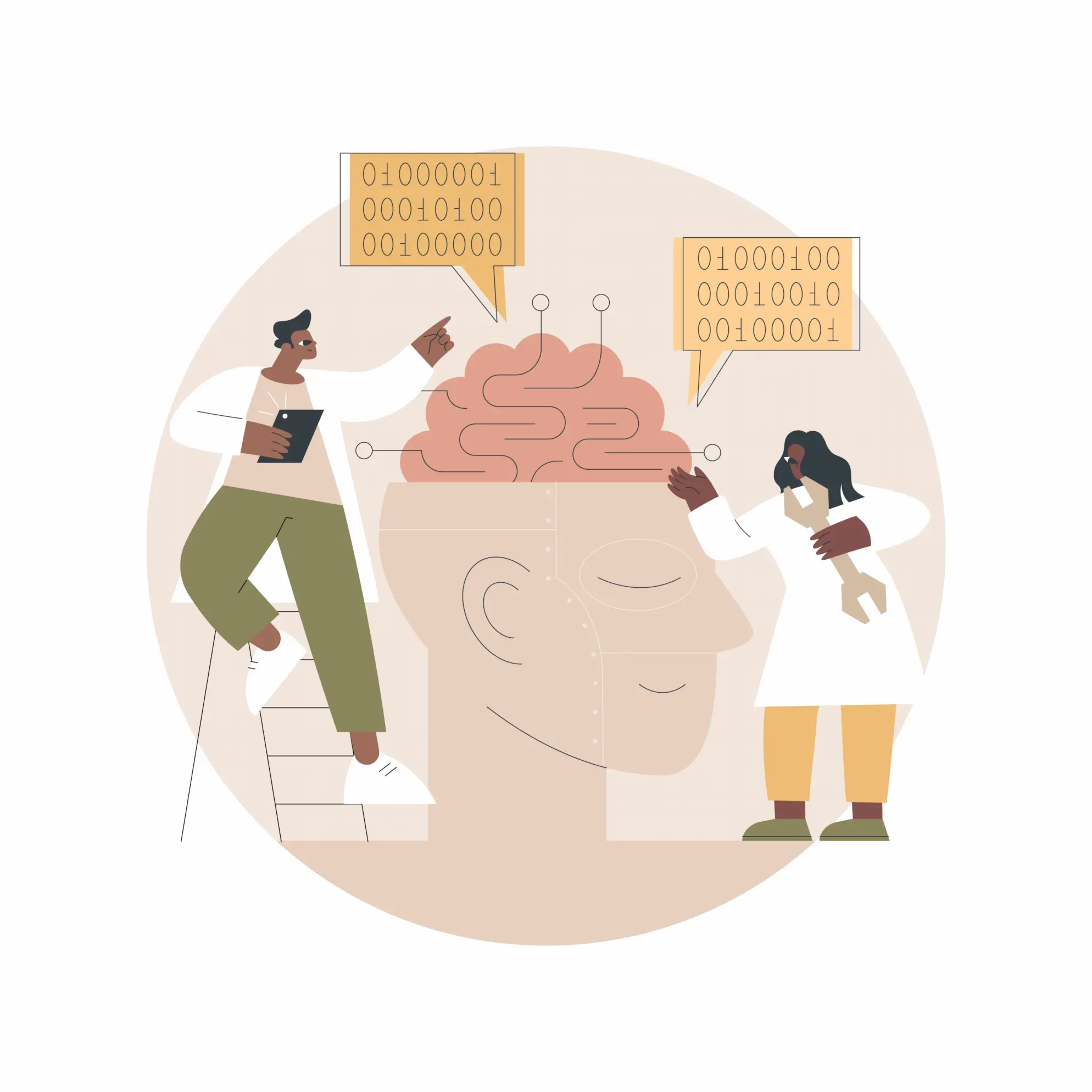What is Natural Language Generation?
Natural Language Generation is a type of AI-powered technology that converts structured data into human-like language. It is used in a wide range of applications, from chatbots and virtual assistants to business intelligence and report generation. NLG works by taking structured data as input and generating natural language output that is easy for humans to read and understand.

NLG vs NLU vs NLP
Natural Language Processing (NLP), Natural Language Generation (NLG), and Natural Language Understanding (NLU) are three pivotal fields within artificial intelligence (AI) that focus on the interaction between computers and humans through natural language.
Natural Language Processing (NLP)

NLP is an interdisciplinary field that combines linguistics, computer science, and AI to enable machines to process, analyze, and understand human language. It encompasses a broad range of functionalities such as text analysis, language translation, and sentiment analysis. NLP serves as an umbrella term that includes both NLG and NLU.
Natural Language Understanding (NLU)

NLU is a subset of NLP that focuses on the comprehension aspect. It involves the machine’s ability to understand the context, sentiment, and intent behind the text input. NLU is crucial for tasks such as intent recognition in chatbots, question answering systems, and understanding human emotions through text.
Natural Language Generation (NLG)
NLG, another subset of NLP, involves the generation of human-like text by computers. It converts structured data into natural language. NLG is widely used in applications such as chatbots for generating responses, automated report writing, and creating written content from data sets.
The Interplay and Distinctions
While both NLU and NLG fall under the NLP umbrella, they serve different purposes. NLU is concerned with understanding the input, whereas NLG focuses on generating meaningful output. Often, systems combine both to facilitate complete interaction; for example, a chatbot may use NLU to understand a user’s query and NLG to generate a response.
Applications and Significance
The integration of NLP, NLU, and NLG is revolutionizing numerous industries. For instance, in healthcare, NLP is used for processing clinical notes, NLU helps in understanding patients’ queries, and NLG creates personalized health reports. These technologies are also extensively used in customer service, content creation, language translation, and numerous other fields.
How does Natural Language Generation (NLG) Work?
Natural Language Generation (NLG) uses algorithms to convert data into human-readable text, enabling computers to generate written content.
Data Preparation
Before generating text, the NLG system needs to gather and process the data it will use as input. This data can come from various sources such as databases, spreadsheets, or APIs. The system then organizes the data into a structured format, which can be easily understood by the NLG algorithms.
Template-Based Approaches
One common method for NLG is the template-based approach, which involves pre-defined text templates with placeholders for specific data points. The NLG system replaces these placeholders with the relevant data from the structured input. This method is simple and efficient, but it may lack the flexibility and creativity of more advanced techniques.
Statistical and Machine Learning Techniques
More sophisticated NLG systems use statistical and machine learning methods to generate text. These techniques analyze large datasets of human-generated text to learn patterns, grammar rules, and linguistic structures. They then use this knowledge to create new, original text based on the input data. Examples of such techniques include n-gram models, hidden Markov models, and neural networks.
Deep Learning and Neural Networks
Deep learning, a subset of machine learning, has revolutionized NLG with the development of advanced neural networks like Recurrent Neural Networks (RNNs), Long Short-Term Memory (LSTM) networks, and Transformer models. These models can generate more natural and coherent text by capturing complex language patterns and context. Popular examples of deep learning-based NLG systems include OpenAI's GPT-3 and Google's BERT.
Evaluation and Improvement
To ensure the quality and effectiveness of the generated text, NLG systems are continuously evaluated and improved. This can involve human evaluation, where experts assess the text's readability, relevance, and grammaticality, or automated evaluation using metrics like BLEU and ROUGE. The feedback from these evaluations is then used to refine the NLG algorithms, resulting in better text generation over time.
In conclusion, NLG is a fascinating field that combines data processing, machine learning, and linguistic knowledge to create human-like text. With advancements in AI and deep learning, NLG systems are becoming more capable of generating natural, engaging, and informative content.
Types of NLG
Types of NLG: Rule-based NLG, Template-based NLG, Statistical NLG, Hybrid NLG, Neural NLG, and Deep NLG are different approaches to generate natural language text.
Template-based NLG
Template-based NLG is one of the most basic types of natural language generation. It involves using predefined templates with placeholders for data. These templates are usually created manually by developers or content specialists. For instance, weather report generation can use templates like “The temperature in [City] is [Temperature] degrees.” This approach is easy to implement but lacks flexibility.
Statistical NLG
Statistical NLG uses statistical models to generate text. These models are typically trained on large datasets and rely on patterns and probabilities to construct sentences. This type of NLG is more adaptable compared to template-based, as it can generate a wider range of sentences. However, the quality of the generated text can be inconsistent.
Rule-based NLG
Rule-based NLG is built upon a set of linguistic rules. These rules define the grammar and structure of the language. Developers and linguists manually create rules that guide how the system generates text. For example, rules can specify how to convert data into text, or how to structure sentences. Rule-based systems are often used in applications where precision and control over language are essential.
Neural NLG
Neural NLG leverages deep learning, particularly neural networks, to generate text. Recurrent Neural Networks (RNNs) and Transformers are commonly used architectures in Neural NLG. This type has gained popularity for its ability to produce more natural and coherent text. GPT (Generative Pre-trained Transformer) is an example of a model using this approach.
Hybrid NLG
Hybrid NLG combines elements from the aforementioned types. For example, it might use templates for specific parts of the content, and neural networks for other parts. Hybrid systems attempt to capitalize on the strengths of different NLG approaches, and are often employed in complex applications where high quality and diverse content is desired.
Why use Natural Language Generation?

Enhancing User Experience
Natural Language Generation (NLG) can create human-like, contextually relevant content, enabling more engaging and personalized interactions with users.
Streamlining Content Creation
NLG automates the process of generating text, saving time and resources while still producing high-quality, creative, and diverse content for various platforms.
Simplifying Data Visualization
NLG can transform complex data into easily understandable narratives, making it simpler for users to grasp insights and trends without requiring extensive data analysis skills.
Boosting Personalization and Customization
NLG systems can tailor content to individual users, considering factors like preferences, past interactions, and demographics, resulting in a more personalized and relevant experience.
Facilitating Multilingual Communication
NLG can generate content in multiple languages, helping businesses reach global audiences and ensuring clear, effective communication across linguistic and cultural barriers.
Where is Natural Language Generation used?
NLG is used in a wide range of industries, including healthcare, finance, and marketing. NLG is used to generate reports, summaries, and insights from large datasets, to create personalized content for customers, and to improve customer engagement and satisfaction.
NLG is used in a wide range of real-life applications, including chatbots and virtual assistants, financial reporting and analysis, and marketing and advertising. For example, NLG is used by news organizations to generate news articles from structured data, such as sports scores and financial data.
Who uses Natural Language Generation?

NLG is used by a wide range of professionals, including data scientists, software developers, and marketing professionals. NLG is also used by researchers in academia and industry to advance the field of artificial intelligence.
There are several experts in the field of NLG, including researchers at universities and industry professionals at companies such as Amazon, Google, and Microsoft.
How to implement Natural Language Generation?
Implementing NLG involves several steps, including data preparation, model selection, and training and evaluation. There are several tools and software packages available for implementing NLG, including GPT-3, NLTK, and OpenAI. Best practices for implementing NLG include selecting the appropriate model architecture, optimizing hyperparameters, and regularizing the model to prevent overfitting.
Steps to build an NLG system
Building an NLG system involves several steps, including data preparation, model selection, and training and evaluation. The first step is to identify the data sources and determine the types of output that are needed. The second step is to select an appropriate NLG model, such as a template-based or rule-based model. The third step is to train the NLG model on a large dataset and evaluate its performance.
Tools and software for NLG implementation
There are several tools and software packages available for implementing NLG, including GPT-3, NLTK, and OpenAI. These tools and software packages provide pre-trained models and APIs for generating natural language output from structured data.
Best practices for implementing NLG
Best practices for implementing NLG include selecting the appropriate model architecture, optimizing hyperparameters, and regularizing the model to prevent overfitting. It is also important to evaluate the performance of the NLG system on a test dataset and compare it to its performance on a training dataset.
Training a Natural Language Generation system
Training an NLG system involves feeding it large amounts of data and adjusting its weights and biases to improve its predictions over time. Data preparation is a critical step in training an NLG system, as the quality and quantity of data can greatly impact its performance.
Techniques for NLG training
Techniques for NLG training include backpropagation, stochastic gradient descent, and batch normalization. Challenges in training an NLG system include overfitting, vanishing gradients, and exploding gradients.
Evaluating a Natural Language Generation System
Evaluating an NLG system involves measuring its performance on a test dataset and comparing it to its performance on a training dataset. Metrics for evaluating NLG systems include accuracy, precision, recall, and F1 score.
Techniques for evaluating NLG systems
Techniques for evaluating NLG systems include cross-validation, early stopping, and ensemble methods. Improving NLG system performance involves optimizing hyperparameters, regularizing the model, and increasing the quantity and quality of data.
TL;DR
Natural Language Generation is a powerful type of AI-powered technology that is used to convert structured data into human-like language. NLG has several benefits over traditional methods of generating text, including its ability to generate text quickly and accurately, its ability to handle large amounts of data, and its ability to generate personalized content. NLG is used in a wide range of industries, from healthcare and finance to marketing and advertising. Despite its limitations, NLG is expected to have a significant impact on industries and society in the coming years.
Frequently Asked Questions
What is the main purpose of NLG?
NLG aims to generate human-like text or speech from structured data, enabling machines to communicate naturally and effectively with humans.
How does NLG differ from NLP?
While NLG focuses on generating human-like text, Natural Language Processing (NLP) is concerned with understanding and analyzing human language.
Can NLG create original content?
Yes, advanced NLG systems using deep learning can generate original, coherent, and contextually relevant content based on input data.
Is NLG limited to English only?
No, NLG systems can be developed for various languages, but the availability and quality of models may vary depending on the language.
Are there any limitations to NLG?
NLG can face challenges such as generating repetitive or biased content, maintaining coherence, and ensuring the generated text meets specific quality standards.

